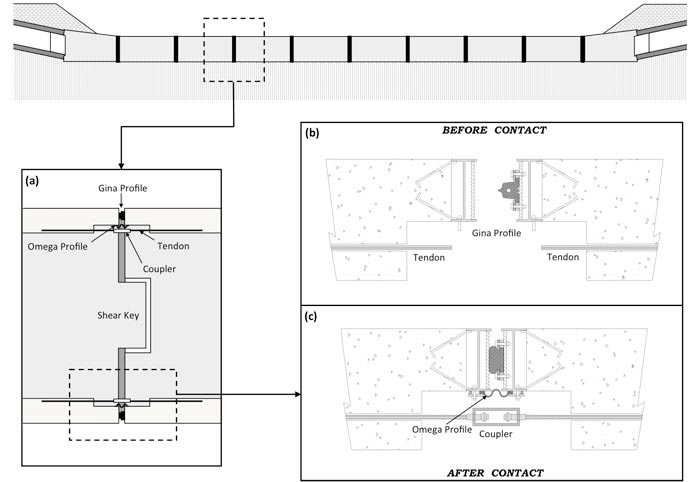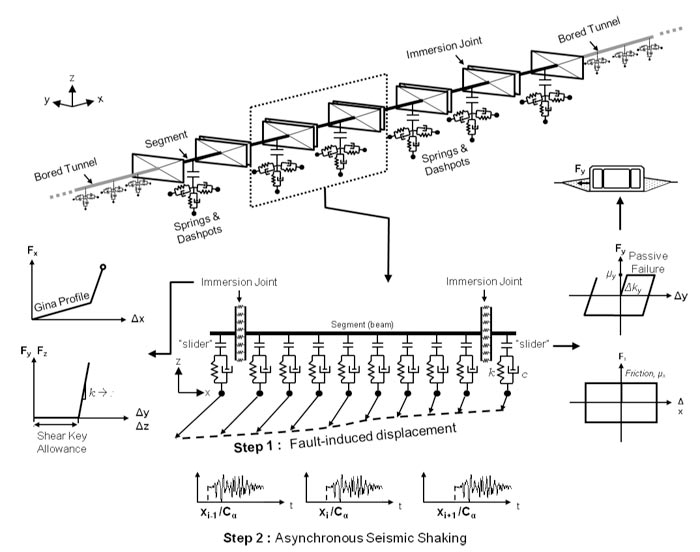Undersea Rion–Antirrion Rail Link : Investigation and Analysis of the Seismic Response of Under-study Immersed Tunnel, Dynamic Analysis of Soil-Structure Interaction, and Analysis of the Consequences of Possible Tectonic Dislocation (2003-2004)
The scope of this research project was to investigate the feasibility of a railway immersed tunnel across the Rion–Antirrion straits, in Greece. Construction of such a tunnel will constitute a major technological challenge due to the combination of great water depth of 70 m over its entire length, the high seismicity of the area, and the relatively poor soil conditions. Following the results of a detailed seismo-tectonic study, the tunnel had to be designed to withstand the consecutive action of : (i) 2 m of tectonic deformation due to a major normal fault rupturing in an earthquake occurring in the basement rock underneath the tunnel, and (ii) a subsequent strong excitation from a different large-magnitude seismic event that may occur years later. Non-linear finite elements model the quasi-static fault rupture propagation through the thick soil deposit overlying the bedrock and the ensuing interaction of the rupture with the immersed tunnel. It was shown that despite imposed bedrock offset of 2 m, net tension or excessive compression between tunnel segments could be avoided with a suitable design of the joint gaskets. Then, the already deformed (“injured”) structure was subjected to strong asynchronous seismic shaking. The tunnel was modelled as a 3D massive flexural beam connected to the soil through properly-calibrated nonlinear interaction springs and dashpots, the supports of which are subjected to the free-field acceleration time histories. The latter, obtained with 1-D wave propagation analysis, are then modified to account for wave passage effects. The joints between tunnel segments are modeled with special non-linear hyper-elastic elements, properly accounting for their 7-bar longitudinal hydrostatic pre-stressing. Sliding is captured with special gap elements. A fascinating conclusion emerges in all analysed cases for the joints between segments that were differentially deformed after the quasi-static fault rupture: upon subsequent very strong seismic shaking, overstressed joints de-compress and understressed joints re-compress—a “healing” process that leads to a more uniform deformation profile along the tunnel. This is particularly beneficial for the precariously de-compressed joint gaskets. Hence, the safety of the immersed tunnel improves with “subsequent” strong seismic shaking! Although this research was performed for the needs of a specific tunnel project, the analysis methodology and key conclusions may be useful in other immersed tunneling projects.


